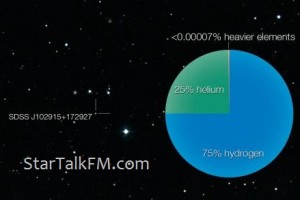mysterious star discovered in Constellation Leo Perplex Scientists
Astrophysicists in Germany, France and Italy have found a very old star of the constellation Leo, whose existence is a complete mystery to them. SDSS J102915 172 927, unlike the other stars “of the same age,” which appeared soon after the Big Bang, has a smaller mass, which does not fit into the modern theory of star formation mechanisms.
Age of the star SDSS J102915 172 927, which is located just to the edge of the solar system, the researchers have more than 13 billion years, while the age of the universe itself is only somewhere around 13.75 billion years. Weight of the newly discovered star is less than 0.8 solar masses. Stars that have formed the eve of the universe as a rule contain little or no heavy metals.
It is believed that in that distant era, 75 percent of the material universe was hydrogen, 25 per cent – helium, and a very small amount of lithium. Stars have higher metal concentrations are the products of a thermonuclear bomb reactions and supernova explosions. Low-mass stars in the universe began to occur after heavy elements cooled clouds of interstellar matter up to the point where gravity starts to exceed the pressure of the hot gas cloud collapse and star.
Analysis of the data the Very Large Telescope (VLT) through the X-shooter spectrograph UVES, and showed that some of the heavy elements in the star SDSS J102915 172 927 is about 20,000 times smaller than the sun. According to one study participants, Perkarlo Bonifacio Paris Observatory, the newly discovered star is relatively dim, and the researchers have not been able to identify the elements heavier than helium is its composition. “The first spectra of this faint star, we found traces of only one” heavy “element, calcium,” he said. “Finding other metals, we had to significantly expand the program’s findings.”
Star contains forty times less than the Lithia this should in theory be the target. For Lithia break, the substance was a warm up to temperatures of more than two million degrees Kelvin. “We had to spend the extra time for the telescope to study stars in more detail,” said Bonifacio.
The researchers drew attention to the limited amount of carbon and oxygen to promote cooling protostellar clouds and create the necessary conditions for the formation of Low-mass stars: it was well below the threshold. So, on the other hand, the older the star, the more its configuration must match the configuration of the universe the early stages of evolution, after all consisted exclusively of light elements, and its weight is greater. However, SDSS J102915 172 927 does not confirm this rule. It has a low concentration of the metal, and at the same time is a small mass.
“The standard theory interprets the corresponding low-mass stars and low metal content should not be, because the cloud point on which they appear does not shrink,” says Elisabetta Kaffal European Southern Observatory (ESO). “We did not expect to find a star in the” forbidden zone. “This means that we may have to revise some of the models of star formation mechanisms.”
This means either that the astronomers were wrong age of the star, or it formed later (after all, its age was defined on the basis of “Metal City”), or its formation is not according to the “Classic” scenario. Finally, it is a theory that the Big Bang have been some of the unique event, and such explosions occur from time to time. So, SDSS J102915 172 927 could not be there, for example, before the Big Bang. At least, that gave birth to most of the objects in the universe. Then everything is explained – so it is lightweight and low metals.
However, according to astrophysicists, SDSS J102915 172 927 is not yet unique, they were able to calculate a few “primitive” stars of low metal city. “Now we will examine the VLT, to check whether they are” primitive, “said Dr. Kaffal.



